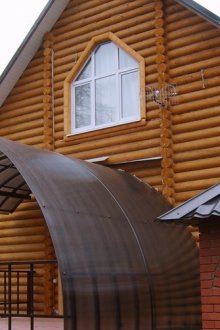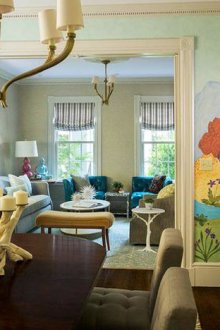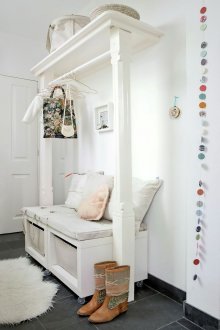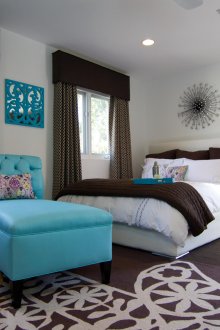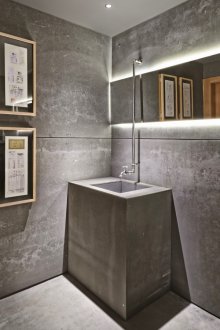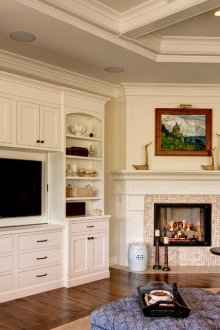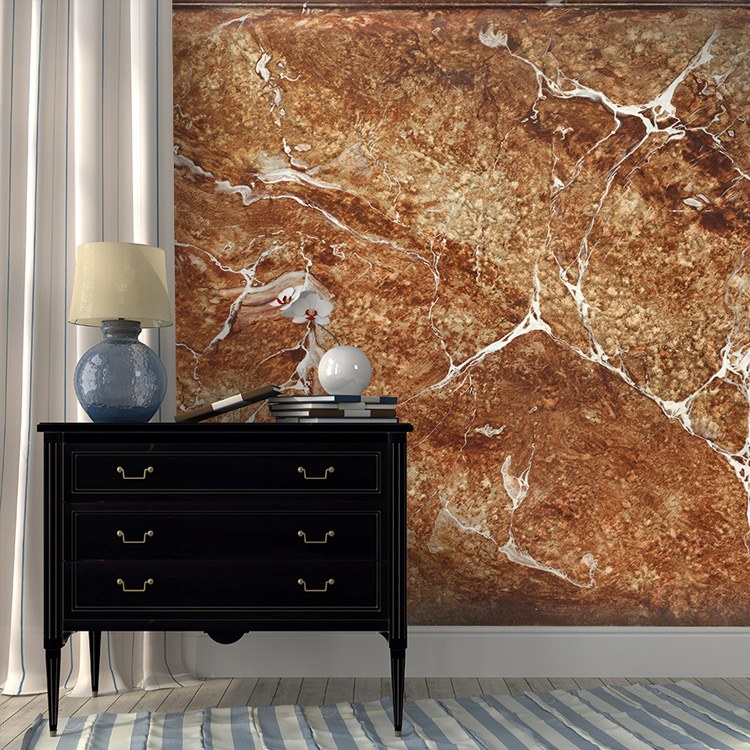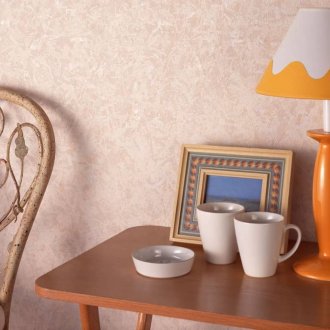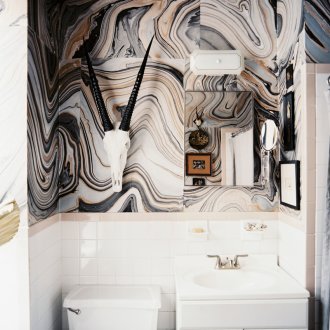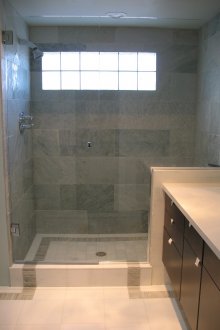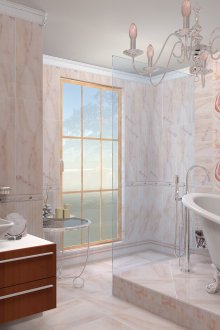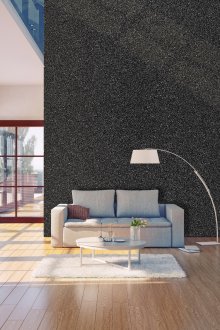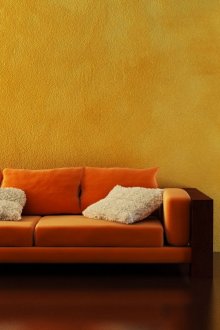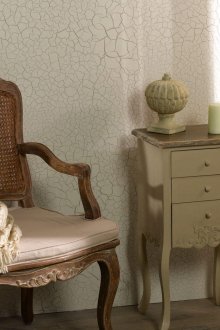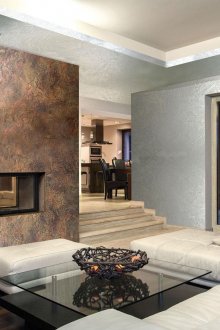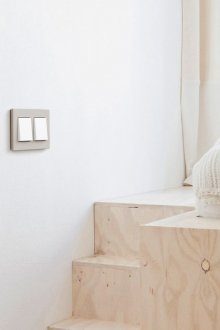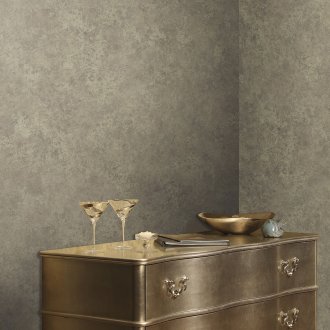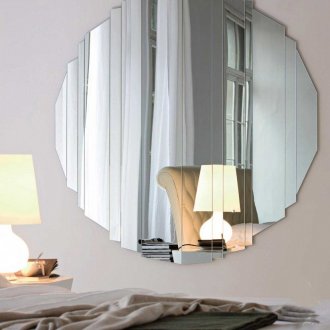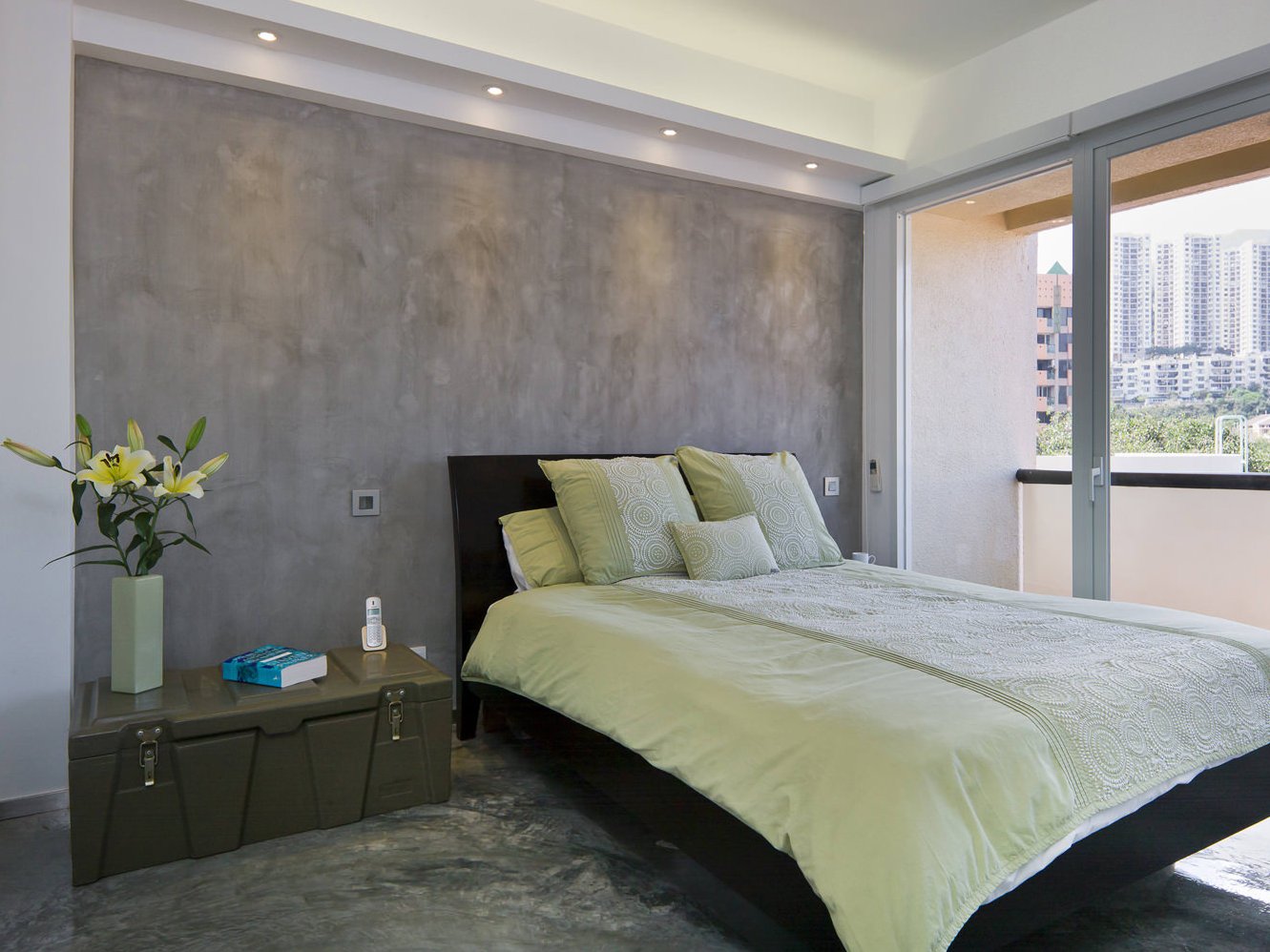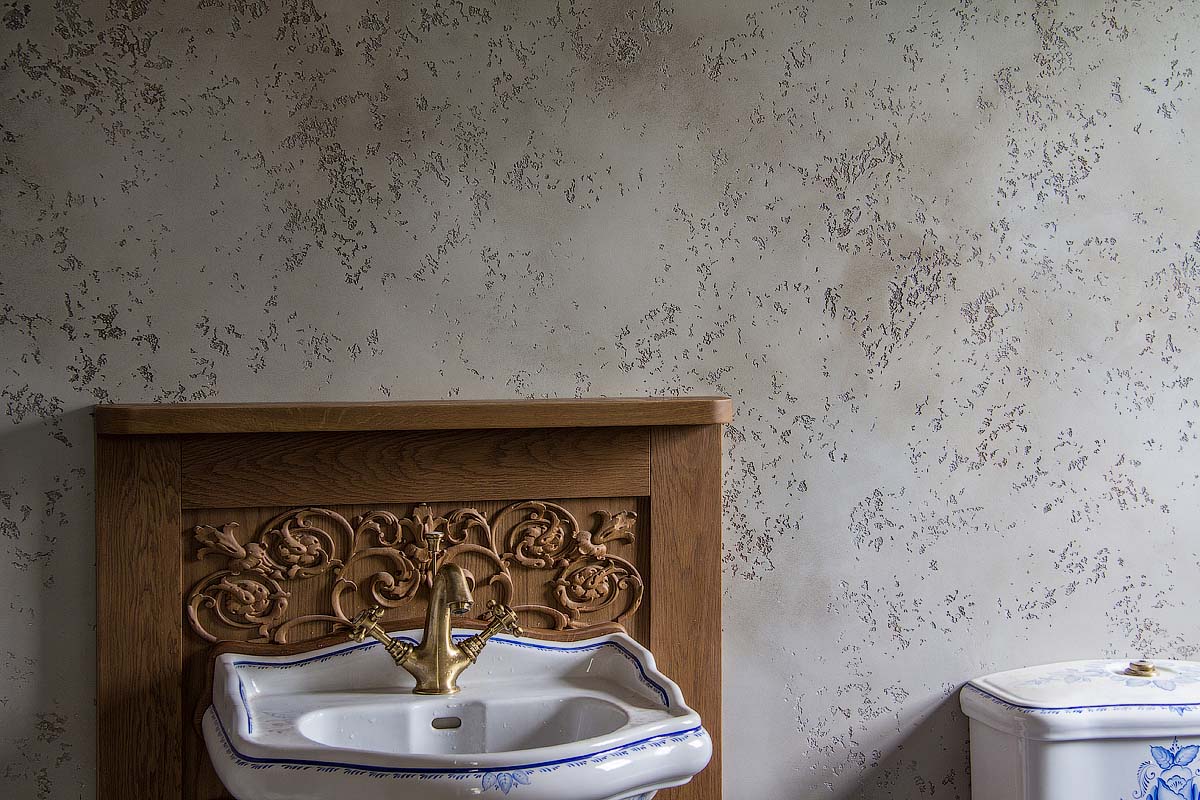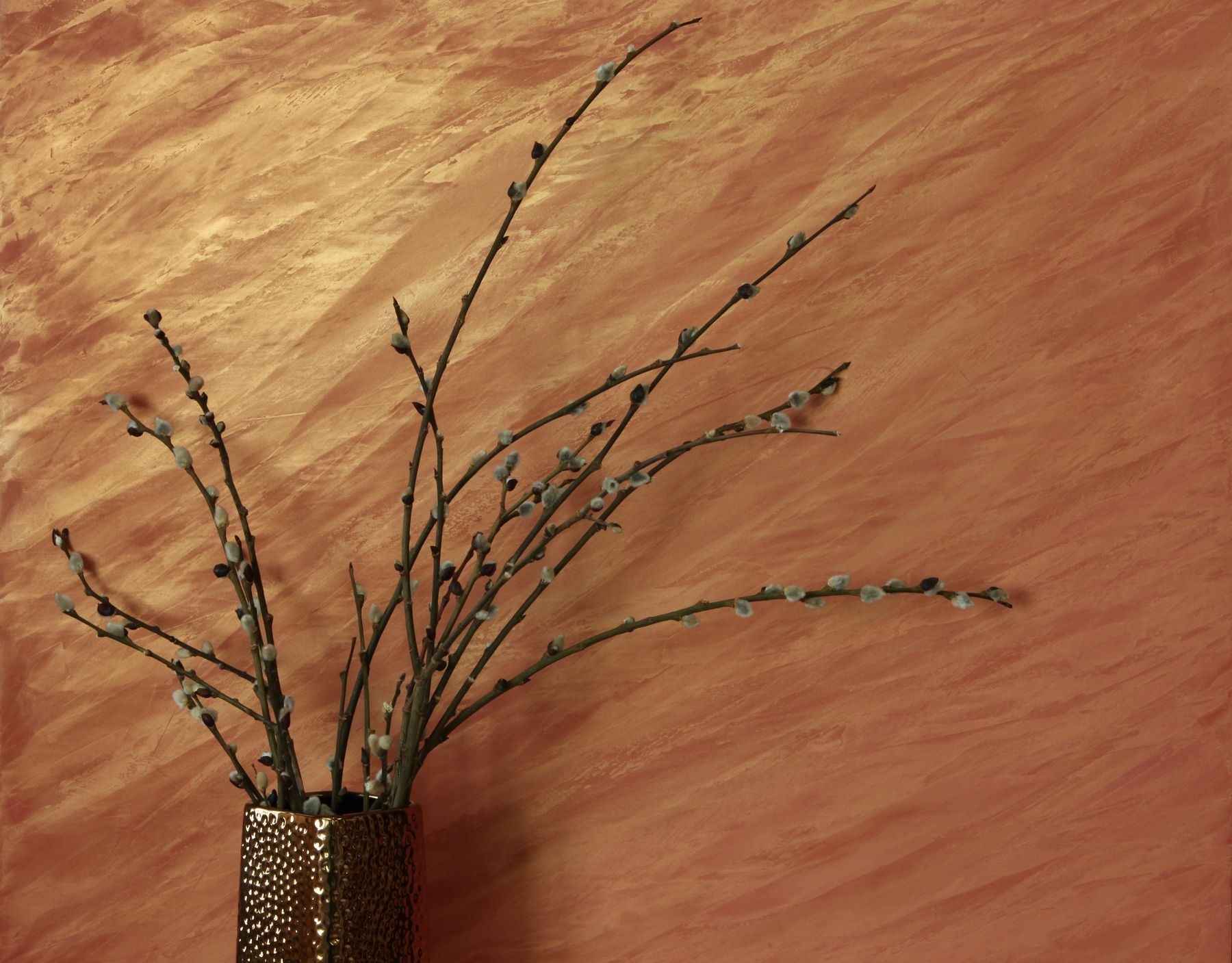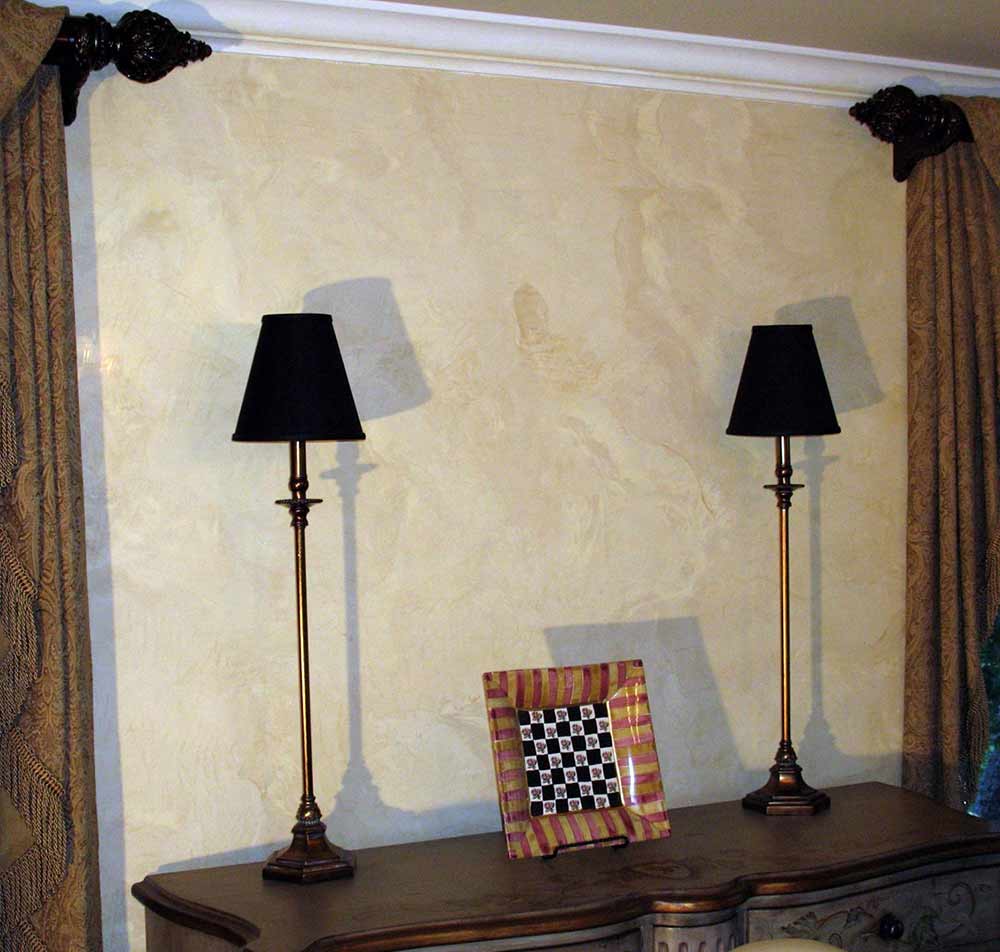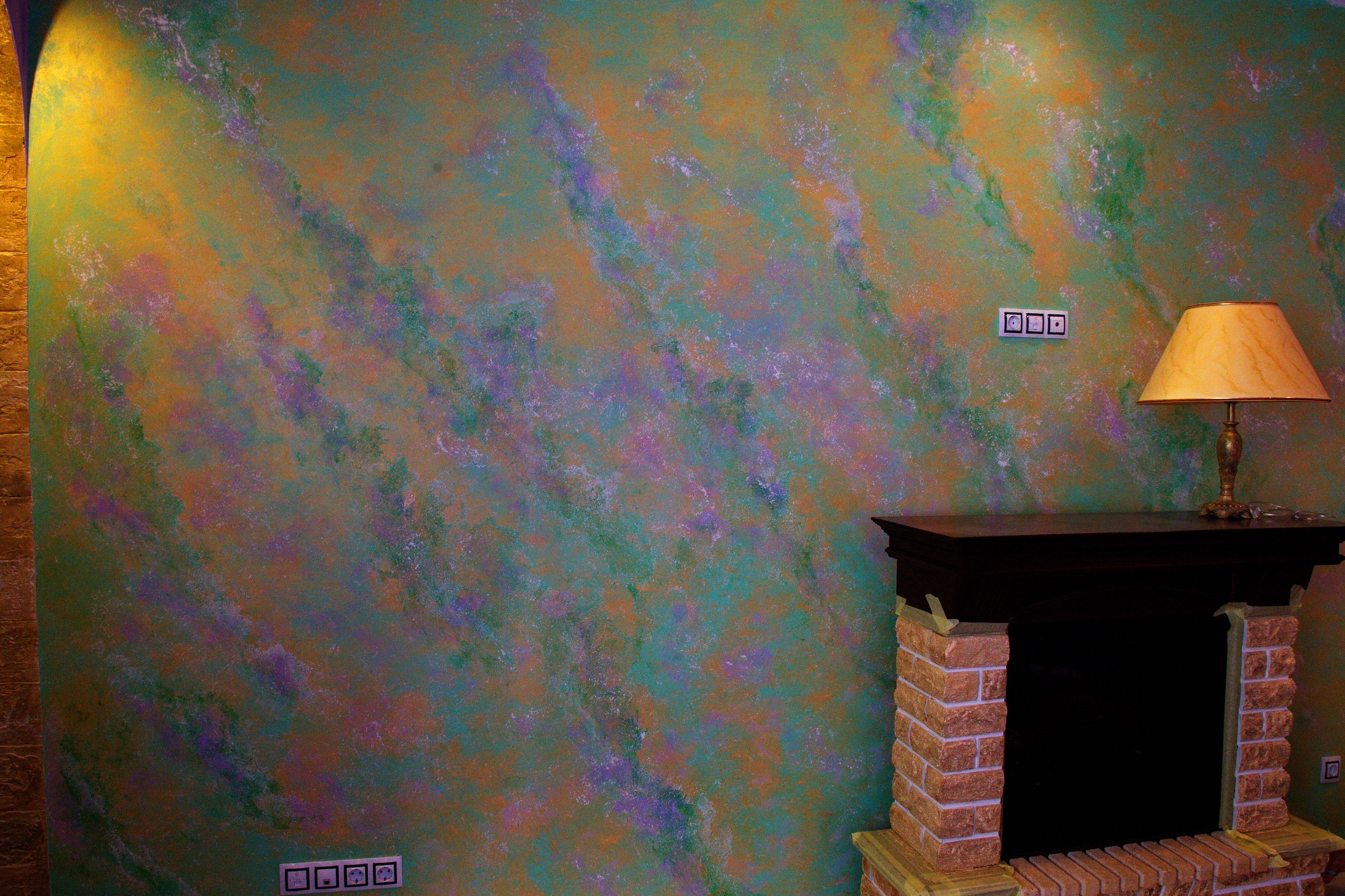Marble plaster - a noble texture in the house (25 photos)
Content
The use of natural stone, such as marble and granite, creates a rich monumental view of buildings that are distinguished by their strength and external aesthetics. To use natural stone for finishing buildings is an expensive and time-consuming pleasure. Therefore, imitation of surfaces under natural stone, which is created using marble plaster, is now used.
What is marble plaster and its properties
Decorative marble plaster got its name due to a crumb filler made of marble and its dust, combined with lime powder. The composition also includes:
- synthetic acrylic copolymer in the form of an aqueous emulsion;
- water-repellent and antiseptic, and other additives;
- preservatives and coloring pigments.
Due to this composition, a coating based on marble chips gives the surface a unique texture and is used as a finish. This material has excellent adhesive properties and mixes well with brick, concrete, drywall and other surfaces. Decorative crumb marble plaster does not require laborious work and can be used to decorate the walls of the kitchen, bathroom and other rooms inside the building, as well as for facing the outer sides of buildings. This finish gives the surface the following properties:
- high strength and hardness, providing resistance to mechanical damage;
- resistance to climatic influences: moisture and temperature differences;
- good vapor permeability, allowing the walls to "breathe";
- resistance to UVL, chemicals and fire;
- environmental safety;
- varied texture and color scheme.
Types of Marble Plaster
Finishing material based on marble chips is divided depending on the size of the filler fraction. The grains of crushed marble should be approximately the same size, so the chips are pre-calibrated. This is necessary so that the surface covered with crumbs has the same thickness and is even.
There is the following division of plaster according to the size of grain size:
- fine-grained, having a fraction size of from 0.2 to 1 mm;
- medium-grained (fraction from 1 to 3 mm);
- coarse-grained (fraction from 3 to 5 mm).
The purpose of the marble coating depends on the size of the grain fraction. For indoor decoration, fine-grained material is used, and for the decorative coating of facades, a medium-grained and coarse-grained composition is used.
Stucco with marble chips is also divided by color. If earlier only crumb was used, which has natural shades, often heterogeneous in color, now many tint colors are used that give the filler a shade of a natural character or a color different from natural marble. For this, pigment dyes resistant to light are used, which do not fade from sunlight and preserve the original color from 15 to 25 years of operation of the coating.
The use of tinted colors allows you to create a wide variety of finishes with this material.
There are also different types of marble mixtures, the composition of which is distinguished not only by the grain fraction and its shade, but also by the filler composition used. Such materials include granite-marble plaster, the Venetian and mosaic varieties.
The granite-marble mixture filler contains, in addition to marble chips, a granite fraction. This significantly affects the strength characteristics of the coating, making it resistant to mechanical damage. However, the addition of granite chips to the mixture also affects the degree of adhesion to the polymer binder, it becomes lower.
Facade marble plaster is most often granite-marble due to its high mechanical stability. They also use it for finishing the outer surfaces of socles and arched structures. In this case, it is more economical to choose materials in which the cement component is white cement M500.
Marble Venetian plaster as a filler includes a dust fraction of marble with the addition of granite, quartz, malachite or other stones. The quantitative ratio of the components of the mixture significantly affects the quality characteristics of the coating and its decorative appearance. The finer the components are ground, the smoother the pattern, and the surface is smoother.
The binder of the Venetian variety of material for some time was slaked lime. With modern production technologies, acrylic resins are more often used as a bonding element. Pigment of both organic and inorganic origin is also added.
There are several types of Venetian plaster mix in composition and density. The higher the density, which is manifested by its stickiness in the finished form, the smoother and better coating. The surface on which this material is applied must be carefully leveled to a smooth state, otherwise marble dust with bright highlights when the composition dries will give out all the problem areas.
The Venetian stucco mixture is mainly used for decorating surfaces in the antique style.
Mosaic marble plaster is a material, the filler of which is a mixture of crumbs of different colors from marble, granite, quartz, malachite, lapis lazuli. Using stones of different colors, they get a unique mosaic look. The crumb of one of these components, painted in a different color, different from the natural color fractions, can also be used. The colored filler is bonded with glue based on an acrylic component.
Using mosaics, you can make drawings in the form of panels on the wall. Mosaic variety is often used for decorative design of individual interior fragments of niches, columns, arched structures.
The technology of using marble plaster
The quality of the finish and the appearance of the surface covered with marble plaster depends on the observance of the technology of its application. In this case, the sequence of the following operations must be observed:
- surface preparation;
- priming;
- surface decoration with a marble layer.
Consider how these stages of work are carried out.
Surface preparation
Any surface on which the decorative layer will be applied must be cleaned of dirt and grease stains. Sawn or hammer down all protruding parts. Coat cracks and dents with a composition that has good adhesion to the base. In case of large irregularities, it is necessary to lay a reinforcing mesh. After applying the rough putty, the base should be sanded.
For coarse-grained marble plaster applied to the facade, minor cracks and defects are allowed, since they can be easily closed with a thick decorative layer. A perfectly smooth surface is required only when applying the Venetian mixture.
Priming
The primer of the leveled layer is necessary to improve the adhesion of the decorative material to the base in order to prevent the plaster from peeling off after drying. Before applying the primer, you need to check how well it will be absorbed by the surface layer. The marble coating will firmly adhere to the wall with the complete evaporation of water from the solution. If the walls are not covered before this primer, then the water from the plaster mixture will be absorbed into their surface layer, which will lead to poor adhesion.
The primer can only be discarded if the wall is coated with a material that practically does not absorb moisture. This is verified by trial primer application. If a few hours after it dries, a shiny film forms, then the stage of priming the base can be abandoned.
In this case, it is better to sand the glossy base in order to roughen the surface layer of the base for better adhesion of decorative plaster to it.
Marble layer decoration
The application of marble plaster on the base is carried out with a spatula, the size of which is 30 or more cm. The larger size is used when working with large facade areas.
After application to the wall, a portion of the mixture is uniformly spread on it with sufficient force to ensure good adhesion to the base. It is important to finish finishing one wall without stopping, without waiting for drying. Then the joints of the extended sections will not be visible.
To ensure uniform shade of the stucco in the interior, it is recommended to apply a color paint close to the color of marble chips to the base. Then glades of dark and light background will not be visible. It is better to buy material of one shade simultaneously in one place. This will also save on marble plaster. Especially relevant is the use of painting the base when decorating with Venetian plaster. Otherwise, you will have to cover the surface with plaster in several layers.
